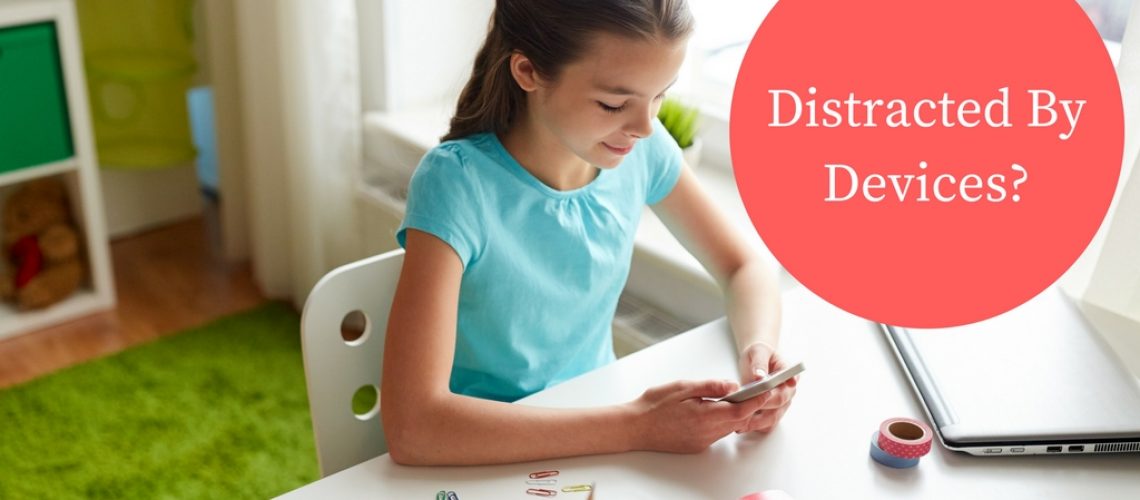Our increasing reliance on digital devices for pretty much everything, often leads us to believe that multitasking is indeed possible and even a prerequisite of daily life today. We can scroll, tweet, like, comment, share, play a round of ‘Words with friends’, crush some candy and answer an email whilst cooking, vacuuming, walking, driving, talking, lunching or a myriad of other tasks. For some of these tasks we can do both and we can pat ourselves on the back for our multitasking superpowers.
And sometimes, it seems as if doing only one thing at a time, is somewhat of a luxury.
So how does this belief in the superpowers of multitasking play out for young people? Particularly when it comes to their ability to study and learn. Because lets face it, they NEED to have their devices near them when studying. They need the access to the internet and they will consistently tell you they can do more than one thing at a time because that’s just how the world works. And as a pretty busy mother of 5, I reckon I have this multitasking thing down pat too. But how constructive is our multi tasking when we are trying to do effective work? And in particular, how effective is the study our children are doing with the constant pinging of notifications and distractions from their digital devices?
According to research, and some first hand personal experience, the simple answer is ‘not very effective’. Or at least not as effective as it should be, were we to focus on one task at a time.
What happens to the brain when we multitask?
Our brains can only give out a finite amount of attention at any given time.
Dr David Myer, a psychology professor at the University of Michigan observed that “under most conditions the brain simply cannot do two complex tasks at the same time”. He concluded that scrolling through facebook, responding to snapchats, listening to a lecture, taking notes or learning new ideas, all use the same part of the brain. The use of the prefrontal cortex in all of these tasks, suggests therefore, that it may not be being used to its optimum ability, when it is being shared over a number of similiar tasks.
So if you can imagine a pie, when we start dividing up that pie to give pieces of it to other tasks, then we are left with smaller amounts for all our remaining tasks. Each task therefore only gets a portion of the attention that our brain can give. We are not really multi tasking therefore, we are in fact, switching tasks. This means that it takes time to go from one task to the other. Our brain needs to regroup every time we change focus and thus we lose time and efficiency.
When your child (or yourself) thinks they can scroll that feed, laugh at the latest snapchat sent, listen to a podcast, buy that dress from the online store and all the while learn a new skill, idea or concept…..then the reality may well be vastly different.
What are the effects of multitasking on learning?
The result on our study and learning is that:
- Tasks take longer: due to this changing of focus. It is estimated that it can take up to 5 minutes to get back to a task after leaving it to answer an email or respond to a text.
- We suffer from mental fatigue more quickly and thus are more likely to make errors: Studies have found, not surprisingly, that those given three tasks made three times as many mistakes as those given two. So the more tasks, the more mistakes.
- Memory is impaired, resulting from reduced attention span, learning and performance.
(Then of course there are the physical effects of multi tasking, with 25% of car accidents deemed to be a result of using a phone whilst driving. A pedestrians field of vision is reduced by 95% when walking and using a device so this sort of multitasking is certainly the type to actively discourage.).
Batch and Filter tasks
So whilst we may like to think that we are getting more things done quickly the opposite can actually be true. What we need to do instead is to ‘batch’ our tasks. That way we get in to the groove, focus on the one task and more quickly and efficiently get that task completed. So answer all those emails together, write all those blog posts, do all the research at once, do all the baking in one session, edit all the photos in one sitting and see how much more productive you can be.
We are certainly going to be hard pressed to get rid of all of our distractions. And certainly there have always been distractions, they are just a little more intrusive today, with their constant beeping and binging and red numbered notifications.
So what we also need to do, is to train ourselves to filter those distractions better. Focus on certain tasks at certain times. Work out those which will be helpful right now, and those that can wait. We need to get better at learning to prioritise the distractions and filter out the noise. This can be something that we work on intrinsically or with the help of external aids and (ironically some apps such as Pomodoro and Time Timers). It can also be a difficult process, particularly for young people who have never had to do this before and only ever know a world where multitasking is just what the world does.
But even being conscious of how you spend your time can make a big difference. Start to build on the habits that will in turn become the behaviours that will lead to a more productive and effective way to live and work.

